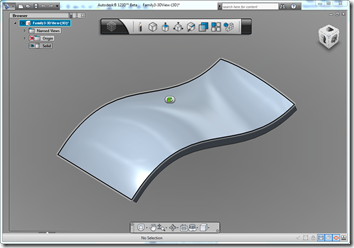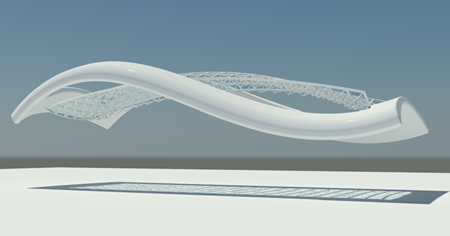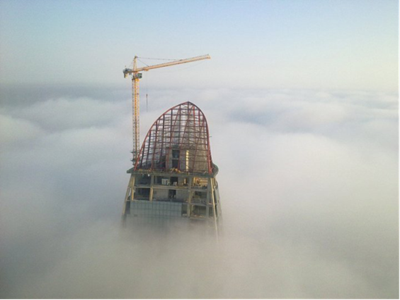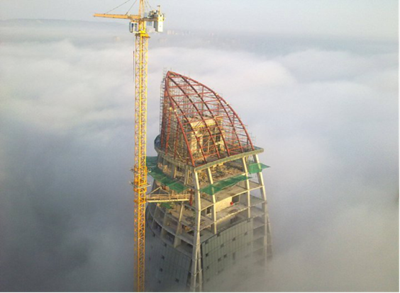Last December, San Francisco's Mission Motors unveiled its striking, third-generation Mission R electric 'superbike' racing machine and told the world it would be contesting the U.S. TTXGP racing series. The company didn't mention the fact that the battery pack on the Mission R was, at that point, still a mock-up.
Two weeks before the first U.S. TTXGP race (May 15, at Infineon Raceway, just north of San Francisco) I heard that the bike had yet to turn a wheel on the track; Mission was cutting it fine. A week before the race, I was told that it might be displayed at the track, but that it certainly wouldn't be entered after problems were encountered on the dyno. Sure enough, last weekend the bike was displayed in the paddock, but it never left it's track-stand. (Lightning Motors was another prominent DNS at the event.)
 |
| You know you want one. There were a few commentators - me included - who felt that the Mission R was the bike that made electric sportbikes relevant. The question is: Will it ever see serial production? I think not. |
This could be seen as business as usual for Mission which, like many startups, has a history of releasing impressive specs, then failing to deliver. In nearby Silicon Valley, where Mission recruits a lot of engineers, there's three main industries: companies produce computer software, hardware, and vaporware. But in Mission's case, the delay's not just a case of a company taking a little longer to fulfill promises. I believe it reflects a whole new, uh, corporate mission...
A history lessonThe company now known as Mission Motors was formed in 2007 as Hum Cycles. The founders were Forrest North (CEO), Edward West (President), and Mason Cabot (VP Engineering). Although most of the core group had worked on electric car projects in university, U.S. regulations make putting a new car on the road a lot more expensive than homologating a motocycle. (Crash testing a car costs several million dollars alone.)
Seeking a quick, easy, and affordable point of entry into the EV business, Hum Cycles' first project was to strip the motor and gas tank out of an old Ducati supersport bike, and pack it with batteries and an electric motor. That was shown at a Bay Area 'green technology' fair, to attract some initial investment.
In the winter of 2009, the company - by then renamed Mission Motors - released images of the Mission One, a sci-fi looking motorcycle designed by Yves Behar, best-known for styling personal computers. The company said that within the year, it would be selling bikes with a 150mph top speed and a 150-mile range. The rest of the fledgling electric motorcycle industry scoffed at those claims. No one laughed at the price, though. The Mission One was to sell for almost $70,000.
 |
| I didn't hate the Yves Behar-penned Mission 1 quite as much as some people, and I have to say that back when Mission still let me attend their tests, I got some pics of it that made it look as good as it could possibly look. Still, the rap on the second-gen Mission prototype was - lots of claims, no deliveries. |
The Mission One put in an under-whelming appearance at the Isle of Man TT in 2009. Tom Montano finished fourth in the TTXGP 'Pro' class with an average speed of 74 mph. To make matters worse, the worst recession in memory had brought motorcycle sales to a screeching halt. It was the wrong time to be taking deposits on a motorcycle with strange styling, questionable performance, but the unmistakable price tag of a Desmosedici.
Mission went back to the drawing board in 2010, bringing in well known American motorcycle designer James Parker and stylist Tim Prentice to pen the all-new Mission R.
That was then, this is now...As an outsider looking in, it seemed to me that the company was learning that investment capital buys seats on corporate boards, and that investors often take a far more sanguine view than engineers do, of passions like motorcycling in general, and racing in particular. Forrest North was moved out of the CEO's office in February, 2010. He remains on the company's Board of Directors, but isn't talking publicly about his change of status, or Mission's strategy going forward.
 |
| Development rider, and Bay Area TT stalwart Tom Montano poses with then-CEO Forrest North. The latter is still nominally on the Mission board, but with Mission's Silicon Valley-style secrecy cult, it's safe to say he won't be talking about the company's change in strategy. |
Last winter, the normally-secretive company let slip that it had provided systems for a Honda Civic hybrid car that was racing in California. At that time, I wondered if we were seeing a shift in emphasis from Mission Motors as a freestanding motorcycle manufacturer, to Mission Motors as a designer or supplier of powertrain components for the auto industry.
The appearance of the Mission R at Infineon Raceway last weekend seems to suggest that Mission Motors still has two-wheeled aspirations, but appearances can be deceiving. Stylist Tim Prentice told me that while he has ideas about what a 'street' version of the race bike would look like, there hadn't been much interest at Mission. Really? Most motorcycle companies design a street bike then give thought to the version they'll race.
One employee told me, "I'd be fired if they heard me say this, but there are two factions inside Mission. One faction still loves bikes, and the other doesn't care about them at all. The group that love bikes are not the ones who are in positions of influence."
A couple of months ago, I got an email with an interesting attachment. It was a PowerPoint presentation that Mission had obviously prepared for potential investors. No contractor or freelancer would have access to such material, so the leak must have some from inside Mission, although by the time I got it, I had no way of knowing who, at Mission, wanted the presentation leaked. What was noteworthy about it was that in the first ten pages of the 25-slide presentation, there were over 20 photos of cars before the first photo of a bike appeared, and that was under the heading, 'Concept Vehicle.'
On one slide, under the heading 'Leadership,' seven employees and board members are listed, including David Moll, of the venture capital firm Infield Capital, but none of the original founders are mentioned.
Although the PowerPoint deck I received was intended as visual support for a presentation that Mission's management would have made in person, and is as such not a comprehensive expose of the firm's strategy, it's clear that motorcycles represent a negligible part of the company's plans, and that in fact the largest 'motorcycle' role envisioned is as a powertrain supplier for an unnamed 'Major Powersports Manufacturer.' The implication is that some frustrated member of the 'bike-loving' faction inside Mission wanted to leak the news that the company was not really in the motorcycle business any more.
At the end of the presentation, there's a slide which explains the "Purpose of [the] Mission Motorcycle" that almost reads as an excuse, to potential investors, for a vehicle that could seem frivolous. Mission cites four reasons for continuing the Mission R progam: That it provides a platform for development, demonstrates performance, builds the Mission brand, and helps to recruit top engineering talent. On the same slide, the company almost sheepishly promises to finance racing efforts through sponsorship, and sell the motorcycle ("at high margin") at the end of the year.
Neither Mission Motors, the company, nor Mission R, the motorcycle, 'demonstrate performance' by failing to make an appearance on the grid at Infineon. Since they've got a cooling system for their motor, and because the battery part of the equation seems well-understood, my guess is that the problems were encountered in the controller and software that regulate the power to make the bike rideable and manage battery life. This is a common teething problem with electric vehicles; I'm sure it would have been solved if Mission's engineers had been able to test the bike on a dyno a few weeks earlier.
As I write this, I assume the Mission R will race at the combined FIM ePower/TTXGP event at Laguna Seca later this summer. But that racing effort is intended to prove Mission's technological prowess - mostly to car manufacturers. They won't be racing to create demand for a Mission road bike.
Did Mission lose its ambition to manufacture high-performance electric sports bikes because it does not foresee the U.S. motorcycle market rebounding strongly enough to create a viable market for high-priced sport bikes? Did investors tell the company, "OK, you've had your fun with motorcycles. Now it's time to grow up and do cars"? Or did Mission learn, while working on that Honda hybrid car project, that Honda's motorcycle division had a bike in development that would crush the aspirations of any of the upstart, electric-only motorcycle companies?
It's not obvious to me why the company hasn't clarified its long-term strategy in the motorcycle press. Perhaps it feels that it would be perceived as dithering, or that it's cried 'wolf!' once too often by releasing photos of bikes to fanfare in the press, which later prove to be a disappointment on the tarmac.
Either way, you read it here first: No matter how well the gorgeous Mission R performs when it's eventually raced, it's unlikely that you'll ever be able to buy a road-going version. Mission's getting out of the motorcycle business.













































